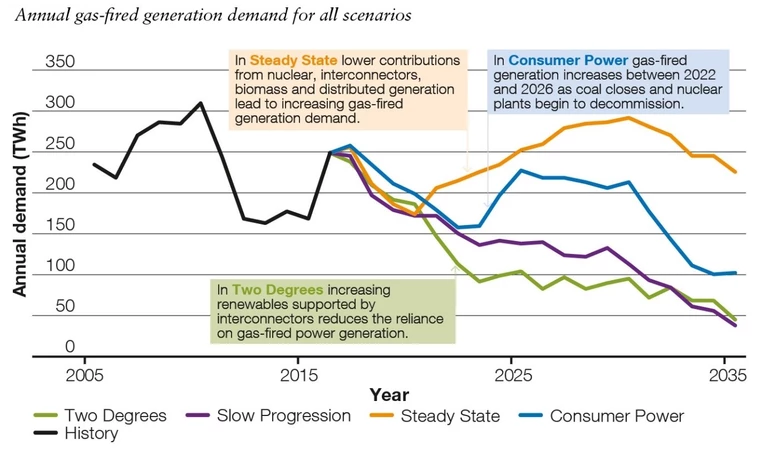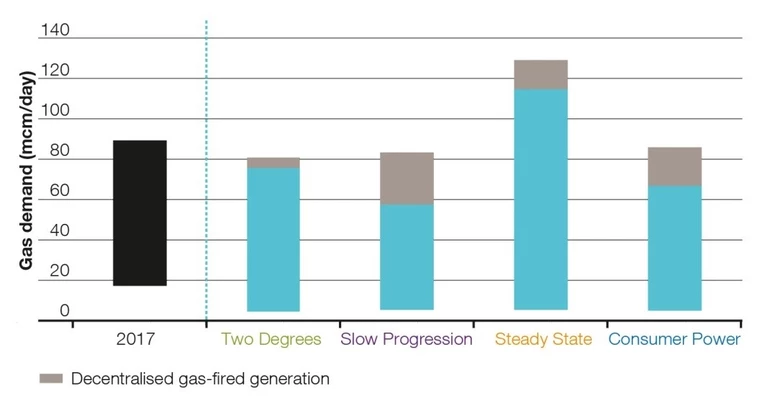The shift towards a decentralised and decarbonised energy future is evident in all our Future Energy Scenarios. However, the pace of this transition is unclear.
Consequently, the future level and behaviour of gas-fired generation is not certain. This is visible in the FES, which forecasts a wide range for annual gas-fired generation demand out to 2035.

With the continued importance of gas-fired power stations, and high levels of uncertainty around their future operation, it is vital that we have a strong understanding of how electricity generation may change both in the short and long-term, and the impact this could have on gas-fired generation.
This will help to ensure we have the right rules, tools and assets in place to safely provide our customers with optionality in how they use the gas network.



